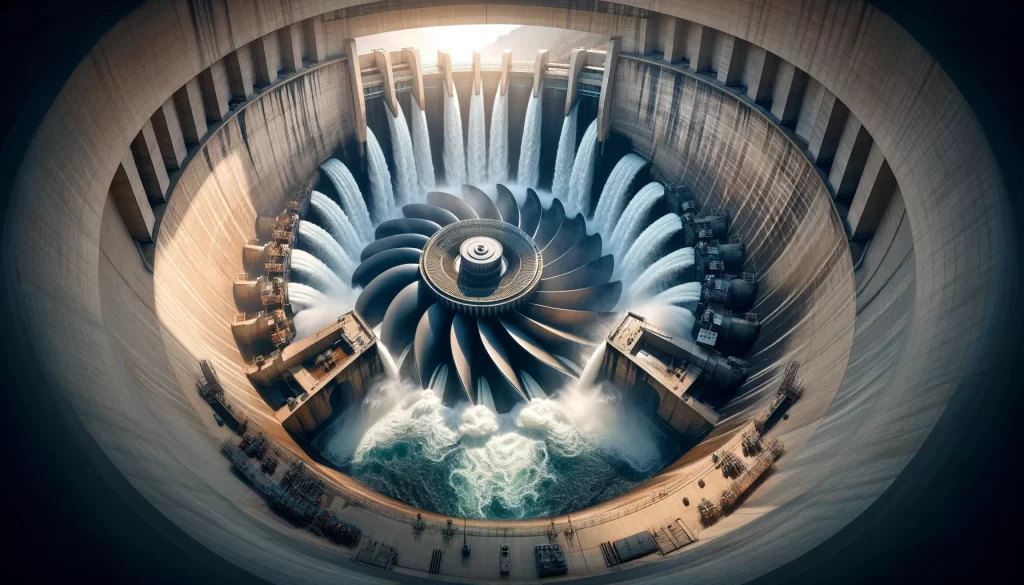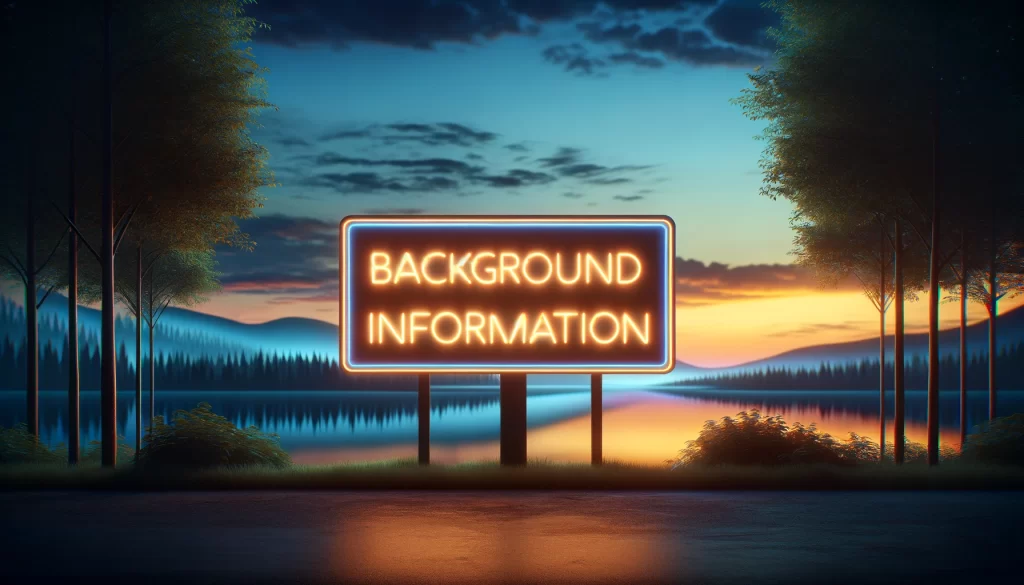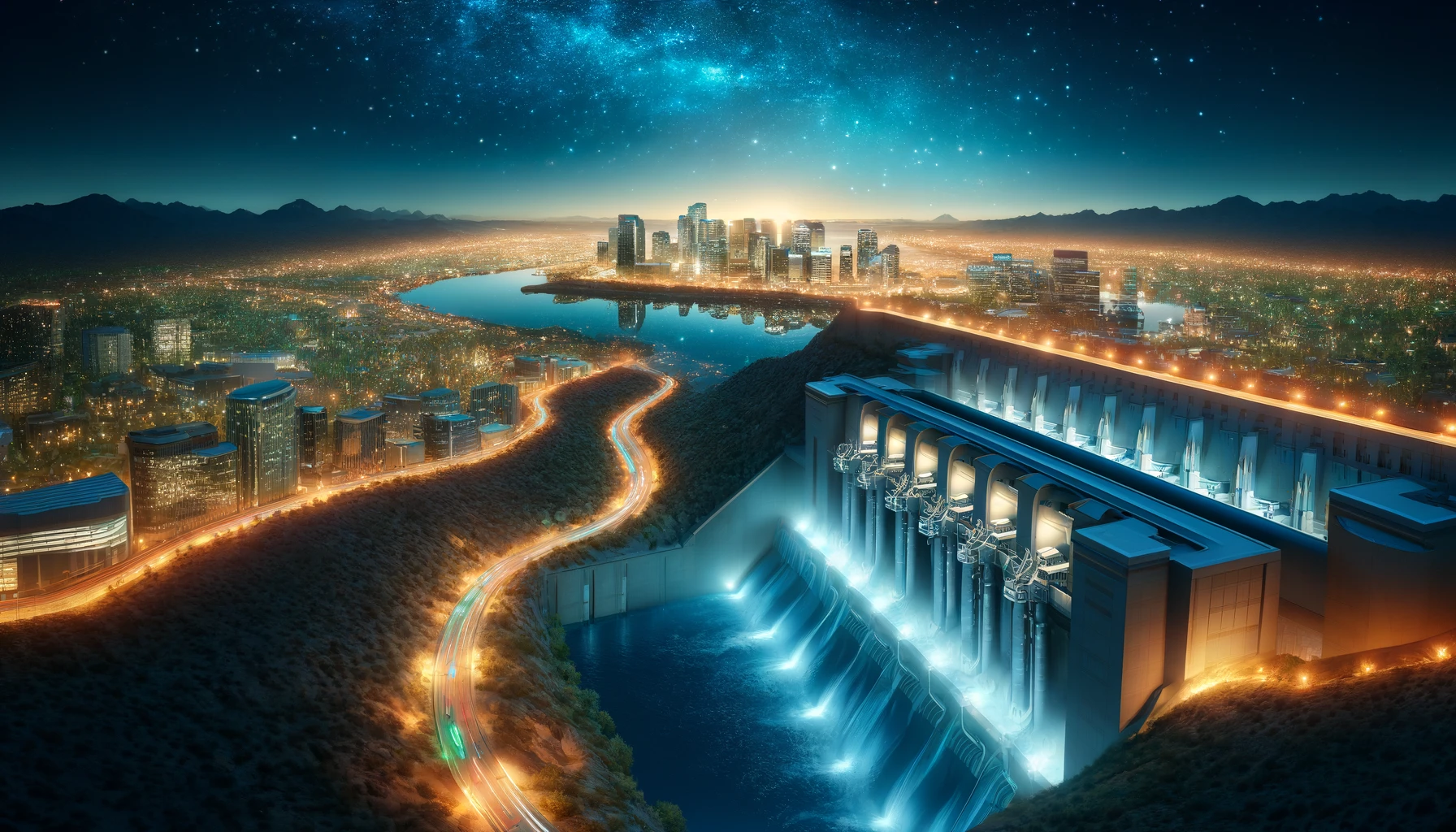About an hour’s drive from the bustling city of Phoenix, in a landscape filled with dramatic cliffs and the tranquil waters of Canyon Lake, you’ll find something quite remarkable – Mormon Flat Dam. Operated by the Salt River Project (SRP), a key utility provider, this dam does more than hold back water; it generates electricity to light up thousands of homes.
How Does It Work?
When SRP lets water flow through the dam, it turns a 55-ton turbine that creates electricity – enough to power about 13,000 homes. Mormon Flat Dam is not your ordinary dam. Since the 1970s, it’s worked like a giant rechargeable battery. When there’s plenty of energy (like during the day when the sun is shining bright), SRP pumps water uphill from a lower lake into Canyon Lake. Then, when people need more electricity (like at night), they let the water flow back down, turning those turbines again to generate power.
Why Is This Important?
This process, known as pumped storage, is crucial as SRP moves towards using more solar energy. Eric Hannoush, an engineer at SRP, explains, “A pumped storage project is really unique. It can store energy from the sun during the day and use it at night when we need it most, especially during hot summers.”
Now, SRP has big plans to expand this system. They aim to produce zero carbon emissions by 2050, which means they need a lot more renewable energy and a way to store it. They’re thinking of building a new, much larger pumped storage system near Apache Lake on federal land.

The Benefits and Challenges
The new project could power up to 450,000 homes for 10 hours in each cycle! It’s not just about meeting sustainability goals; it’s also about keeping up with Arizona’s growing need for electricity. As more people move to the state and summers get hotter, the demand for power, especially for air conditioning, is skyrocketing.
Pumped storage offers flexibility. Unlike coal or nuclear power, which runs constantly, pumped storage lets SRP generate power on demand. It’s like having a giant water battery that can be turned on whenever it’s needed.
Looking Ahead
This ambitious project isn’t without its hurdles. It’ll be a massive undertaking, costing billions and requiring approval from various agencies. Plus, there are environmental concerns to consider, such as the impact on local wildlife and ancient Native American sites.
SRP is open to public input and plans to discuss the project with the community. They believe this new pumped storage system could be a significant step forward in providing reliable, renewable energy for Phoenix and beyond.
This article is based on the following article:

Background Information
Understanding these background concepts can help readers appreciate the complexities and significance of renewable energy projects like the one undertaken by the Salt River Project. It’s not just about generating electricity; it’s about doing so in a way that’s sustainable, reliable, and harmonious with environmental and cultural values. This knowledge lays the foundation for informed discussions about energy, technology, and sustainability.
1. Hydropower Basics
Hydropower, or hydroelectric power, is a form of renewable energy that uses water to generate electricity. When water from a river, dam, or reservoir flows downstream, it can turn a turbine, which activates a generator to produce electricity. It’s one of the oldest and most widely used forms of renewable energy.
2. Pumped Storage Hydropower
Pumped storage is a type of hydropower that works like a big battery. It uses two water reservoirs at different elevations. When there’s extra electricity (like during the day when solar panels produce a lot of power), water is pumped from the lower reservoir to the upper reservoir. When electricity demand is high (like at night), water is released back into the lower reservoir, turning turbines to generate electricity.
3. Solar Power
Solar power is energy from the sun that is converted into thermal or electrical energy. Solar panels, which you might see on rooftops, convert sunlight directly into electricity. Solar power is considered a clean, renewable resource, but its availability fluctuates with the time of day and weather conditions, which is why storage solutions like pumped storage are important.
4. Renewable Energy and Carbon Emissions
Renewable energy sources like solar, wind, and hydropower don’t emit carbon dioxide, a greenhouse gas that contributes to climate change. This is a major reason why transitioning to renewable energy is considered crucial for environmental sustainability. Net-zero carbon emissions mean that an organization or country balances the amount of emitted carbon with an equivalent amount of carbon sequestered or offset, aiming for a zero carbon footprint.
5. The Importance of Energy Storage
Energy storage systems, like batteries or pumped storage hydropower, are essential for a reliable power supply. They store excess energy when demand is low or production is high and release it when needed. This flexibility helps manage the variability of renewable energy sources and ensures a steady electricity supply.
6. Environmental and Cultural Considerations
Building large infrastructure projects like dams and reservoirs can have significant environmental impacts, including changes to ecosystems and wildlife habitats. Additionally, such projects can affect archaeological sites and areas of cultural significance to Indigenous peoples. It’s important for project planners to conduct thorough environmental and cultural impact assessments and engage with local communities and stakeholders.
7. The Role of Utilities and Government in Energy Policy
Utilities like the Salt River Project are companies that provide essential services like electricity and water. Government agencies regulate these utilities to ensure they serve the public interest, including environmental protection and energy policy goals. Legislation and government policy can influence the development of renewable energy projects, including funding, permits, and environmental regulations.

Debate/Essay Questions
- Is pumped storage hydropower a better investment for the future compared to battery storage technologies?
- Should the construction of new renewable energy infrastructure take precedence over the preservation of natural landscapes and wildlife habitats?
Please subscribe to Insight Fortnight, our biweekly newsletter!
